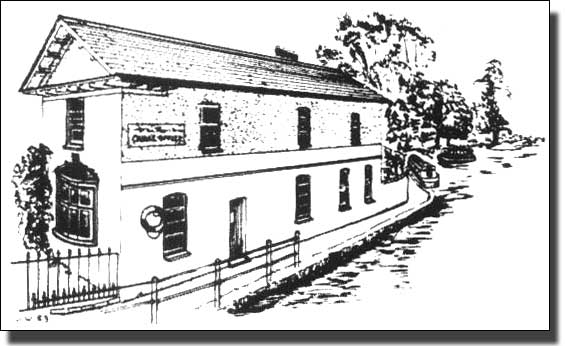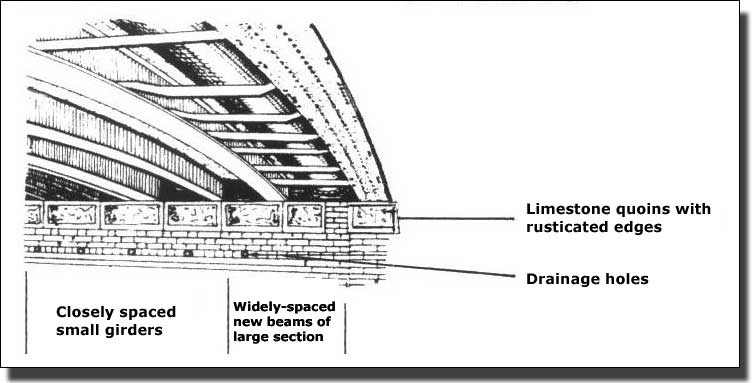How the Canal and Road Bridge System Developed
Local canal and road bridges have been developing over a couple of centuries and more. Old and new ones stand side by side, so it is pointless to attempt to describe them all chronologically. Therefore the following pages of bridge designs are in no particular order. Readers may like, in their imaginations, to remove the later bridges in turn, and so to trace the area backwards to the start of the canals and beyond.
When Westway was built and a new road system created about 1970, many of the bridges had to be widened to take the extra traffic. This widening is visible from below, one side of the bridge dating from 1800 and the other from 1970, with all the differences of manufacture clearly visible.

The Canal Toll House at Little Venice

The Warwick Avenue Bridge over the Canal drawn from below
The 1800 bridge is on the left and the 1970 one on the right
The original Warwick Avenue bridge was built in curved I girders with riveted top plates and cross-bracings. The brick abutments have limestone quoins and rows of weeping holes which allow water in the soil to flow away, instead of finding its own pathways and perhaps washing away the bridge supports.
In 1970 the bridge was widened by adding a few much heavier girders. These were rolled in one piece instead of being riveted up, showing the difference in power between the rolling mills of 1820 and 1970.
